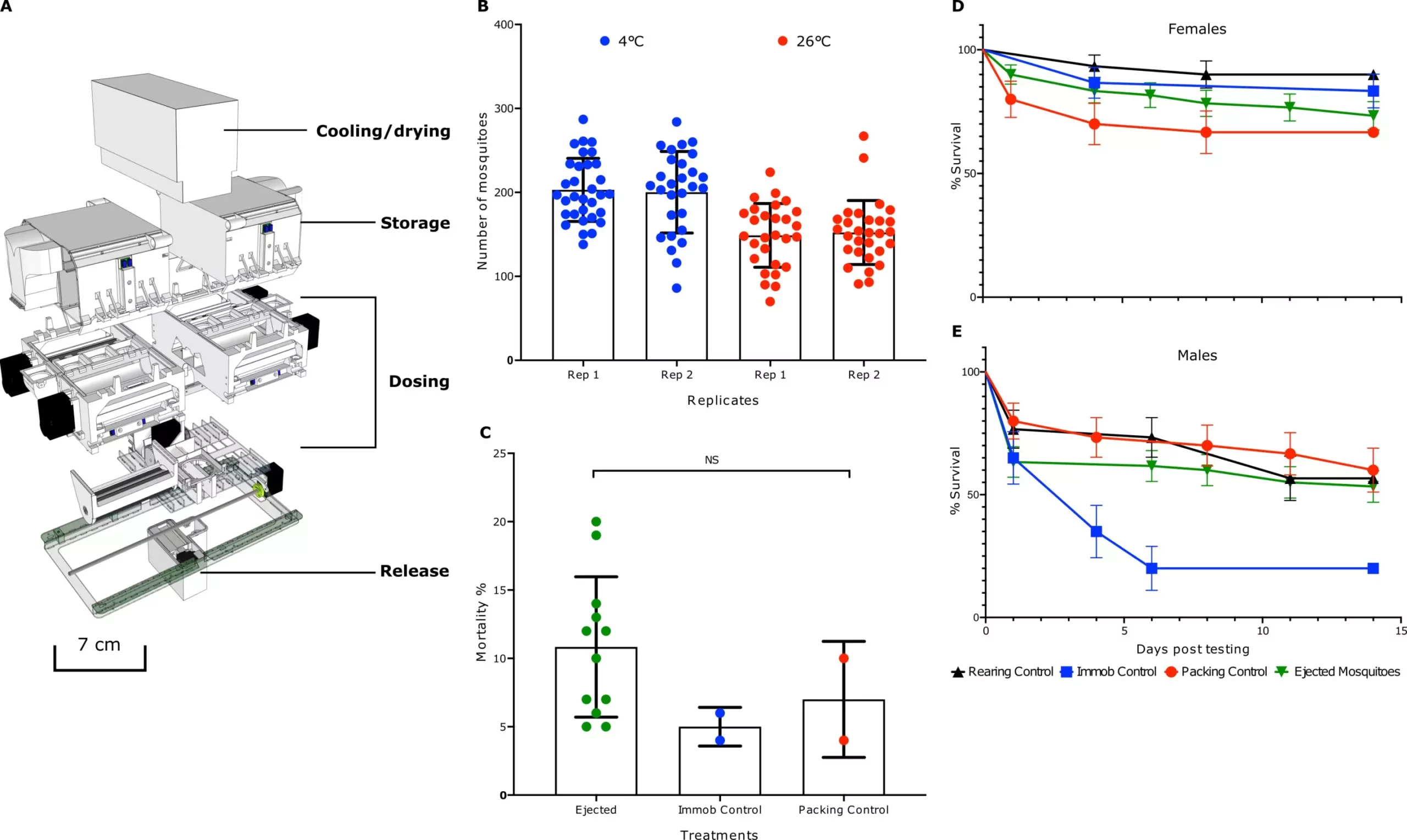Dengue fever, Zika virus, and Malaria—these are not just abstract concepts, but real threats posed by mosquitoes that haunt millions, particularly in tropical regions. According to the World Health Organization, mosquito-borne diseases afflict nearly 700 million people yearly, leading to substantial illness and death. Beyond mere nuisance, these insects are vectors for some of the deadliest pathogens known to humanity. Against this backdrop, innovative solutions become imperative, and a recent breakthrough by an international research team affiliated with the World Mosquito Program stands at the forefront of combating this surge.
From Manual to Mechanized: The Evolution of Mosquito Release Methods
Historically, efforts to control mosquito populations have predominantly relied on labor-intensive and often perilous manual methods. Large populations of mosquitoes are bred, infected with bacteria that significantly reduce their viability, and then released in a strategy meant to outcompete their disease-carrying counterparts. This traditional technique, however, harbors a myriad of inefficiencies. Labor shortages, logistical nightmares, and potential dangers of human handlers are merely the tip of the iceberg. In a revolutionary shift, researchers have turned to automation—specifically, drones—to refine this laborious process.
Innovative Design: The Drone Container System
The researchers have developed an ingeniously designed container capable of holding a staggering 160,000 mosquitoes. Each tiny insect resides in its own compartment until it’s time for release, effectively scaling down the manual labor that plagued previous methods. This drone-housed mechanism is engineered for precision—capable of releasing around 150 mosquitoes at pre-determined intervals—allowing for targeted dissemination over vast areas. This highly organized release strategy not only increases efficiency but drastically improves the chances of successful infection spread among mosquito populations.
The lightweight and sleek design of the drone container carries significance beyond mere volume. It is equipped with climate control features to maintain optimal living conditions for the mosquitoes during transit, as well as a sedation mechanism that ensures the mosquitoes are calm until release. This meticulous attention to design emphasizes the importance of logistics in combating one of humanity’s longstanding enemies.
Field Trials: Proving Efficacy and Safety
When theoretical research meets field tests, the outcome can significantly alter the perception of a solution’s practicality. Initial trials conducted in Fiji displayed exemplary results—drones achieved a uniform distribution of mosquitoes, far exceeding what was possible through manual releases. Repeated assessments confirmed not only the effectiveness of the drone strategy in dispersing infected mosquitoes, but also the consequential decrease in population numbers in the test areas. Such promising results substantiate the vision of a world where mosquitoes’ deadly impact may be mitigated through advanced technology.
Benefits Beyond Efficiency: Automation and Sustainability
Automation brings a host of advantages—not only efficiency and precision in execution but also reduced exposure to operational hazards. Field workers in mosquito management cultivate vulnerability; deploying drones can mitigate these risks to human health. Additionally, the technology aligns with sustainability, optimizing manpower and materials, ultimately promising a reduced ecological footprint. The rapid, scalable nature of drone releases holds the potential to deploy interventions far more widely and swiftly, helping regions activate timely responses to outbreaks.
The Future of Disease Management
As we navigate a world increasingly affected by climate change and globalization, the relevance of mosquito control cannot be overstated. The multitudes fleeing from tropical regions due to health crises only magnify the urgency for innovative solutions like automated mosquito releases. With the groundwork laid by the World Mosquito Program and partners, we may well be witnessing the dawn of a new era where technology and biology collaborate harmoniously. The bright future of infectious disease management rests in the embrace of creativity and innovation, epitomized in the drone’s ascent to a leading role in the battle against diseases—transforming not just pest control, but public health in a revolutionary way.

